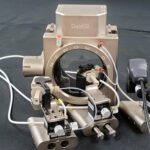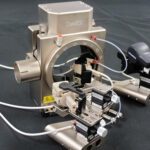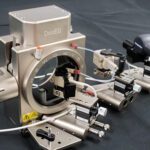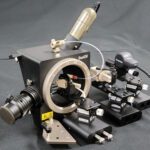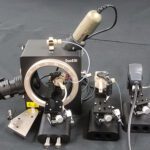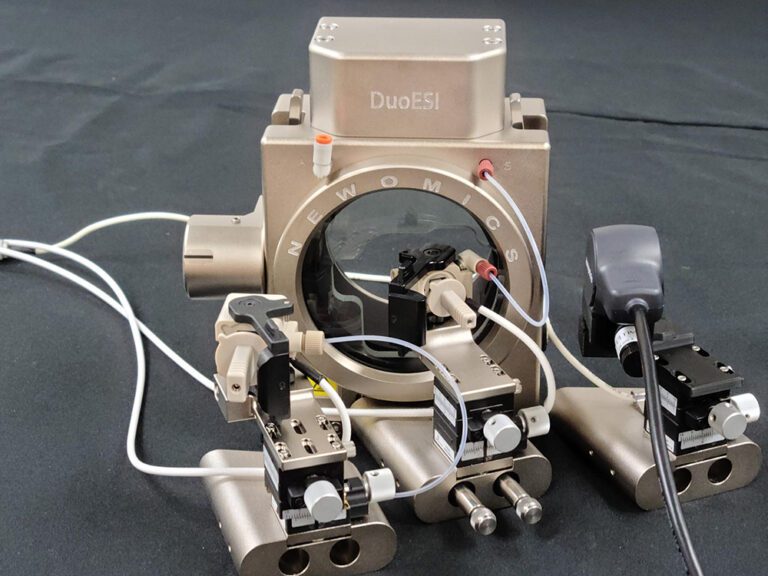
UniESI Source
Using a single ion source interfaced with mass spectrometers, you can achieve ultrasensitive single-cell proteomics, and reproducible high-throughput quantitation of proteins or small molecules. The UniESI Source is a game-changing product. A truly open-source end-to-end solution that puts an end to juggling 3-4 ion sources with different tubing connections on the same mass spectrometer.
Using a single ion source interfaced with mass spectrometers, you can achieve ultrasensitive single-cell proteomics, and reproducible high-throughput quantitation of proteins or small molecules. The UniESI Source is a game-changing product. A truly open-source end-to-end solution that puts an end to juggling 3-4 ion sources with different tubing connections on the same mass spectrometer.
Enhanced Workflow
Built for Superior Microflow and Nanoflow LC-MS
Sensitivity
5 - 50x
more sensitive compared to conventional methods.
Robustness
CV ≤ 5%
from 300 plasma injections.
Throughput
< 1 min.
per sample for direct infusion ESI. More than 60 samples per hour.
Product Configurations
Compatible with Agilent and Thermo Fisher Mass Spectrometers
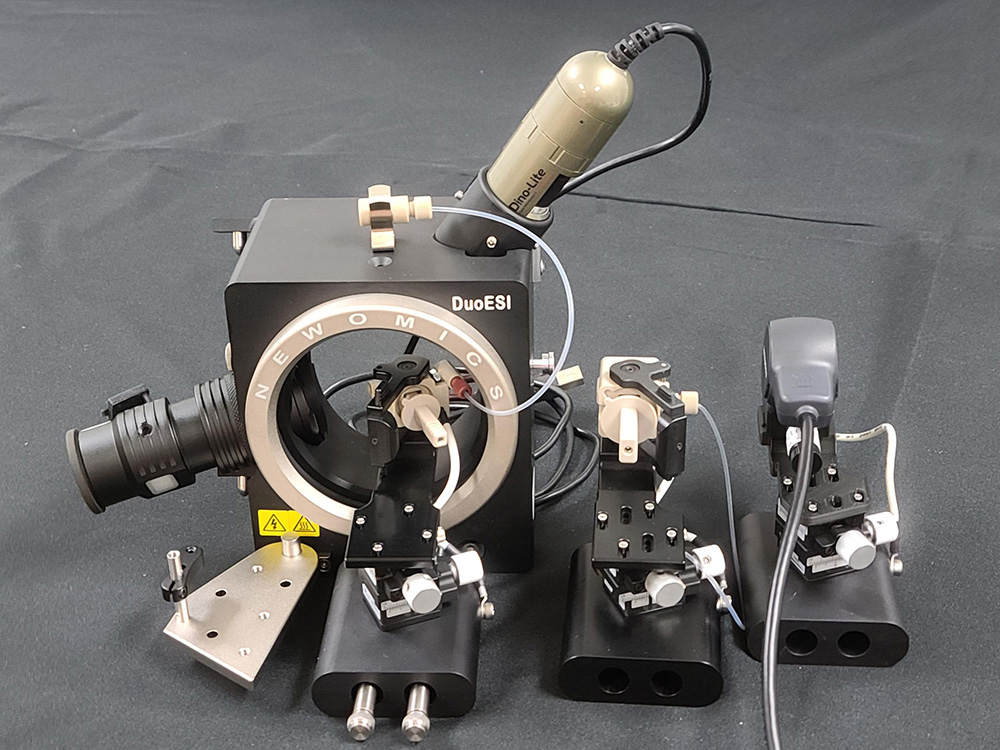
IS-A01U
for Agilent MS
Compatible with: 6500 Series Q-TOF, 6400 Series QQQ, 6200 Series TOF, and all other Agilent MS
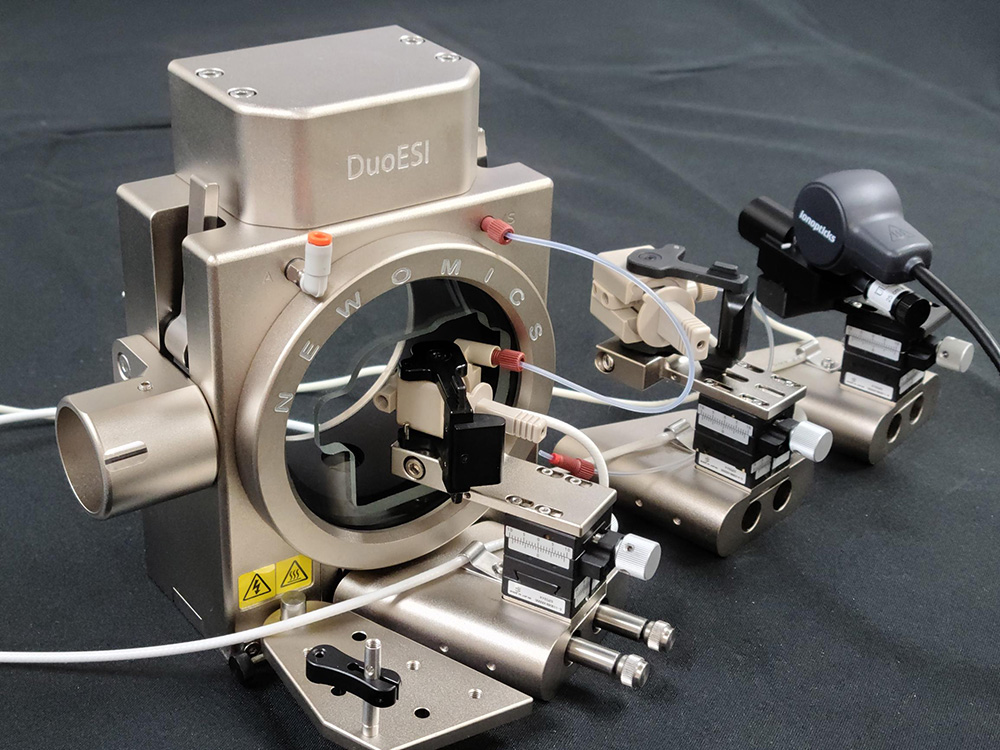
IS-T01U
for Thermo Fisher MS (New Generation)
Compatible with: Orbitrap Exploris (120, 240, 480), Orbitrap Astral, Orbitrap Tribrid Series (Fusion, Lumos, ID-X, Eclipse, Ascend), TSQ Series II (Endura, Quantiva, Altis, Quantis, Fortis)
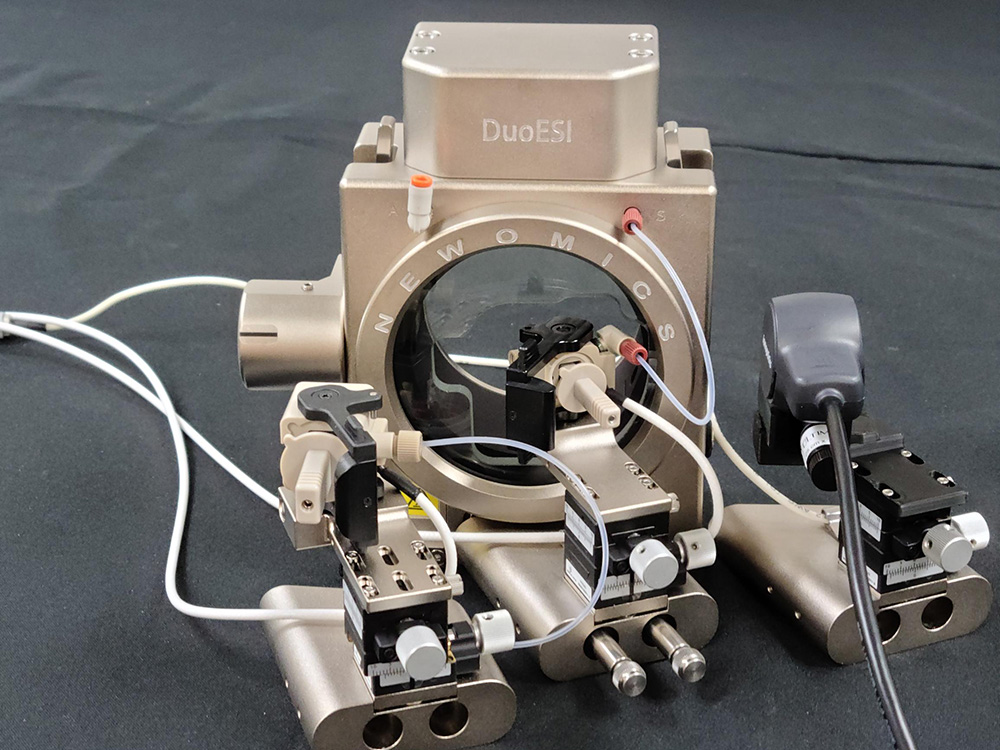
IS-T02U
for Thermo Fisher MS (Legacy)
Compatible with: Q Exactive Series (QE Focus, QE, QE Plus, QE HF, QE HFX, QE UHMR), Exactive Series (Exactive Plus, Exactive Plus EMR), Orbitrap Elite LTQ Series (LTQ XL, LTQ Orbitrap XL, Velos Pro), LCQ Fleet TSQ Series (Quantum, Vantage)
Product Details
Features
- The first interchangeable microflow and nanoflow ion source by a simple swap
- Compatible with all mass spectrometers from Thermo, Bruker, and Agilent
- Plug-and-play platform for nanoflow and microflow MEA chips
- Plug-and-play platform for M3 emitters
- Receive two ion sources for the price of one
Specifications
| Parameter | Specifications |
|---|---|
| Ionization Mode | Atmospheric pressure electrospray ionization (ESI), both positive and negative mode. |
| ESI Probe | Newomics M3 Emitter and MEA Chip (refer to M3 Emitter and MEA Chip specification) |
| Open or Closed System | Semi-closed source |
| Flow Rate | Nano (20 – 1000 nL/min), for nanoMEA chips |
| Spray Angle | Fixed angle of 25° for M3 emitters |
| Capillary Voltage | 0 – 6 kV |
| Spray Current | 0 – 10 µA, max. 50µA |
| Sheath Gas Flow Setting | 0 – 30 (arbitrary units) |
| Auxiliary Gas Flow Setting | 0 – 20 (arbitrary units, optional) |
| Translational Stage | Linear XY-axis manual stage, ±5 mm travel distance, 30 µm travel accuracy |
| Camera | 1.3M pixels, 20x - 90x magnification rate, color CMOS sensor, up to 30 fps frame rate |
| Light Source | Cool white (9000K) 5 mm round LED light, luminous intensity 46400 mcd |
| Connection | Face seal, finger-tight 10-32 threaded fittings including Thermo nanoViper, IDEX MarvelX and MarvelXACT, Waters ZenFit, Phenomenex SecurityLink, VICI Cheminert C360IZR1, and nanoConnect |
| Unit Dimension | Width: 25 cm (9.8 in.) |
| Unit Weight | 3 kg (6.6 lbs) |
| Model | Specifications |
|---|---|
| Catalog # IS-A01U | UniESI Source for Agilent Mass Spectrometers: |
| Catalog # IS-T01U | UniESI Source for Thermo Fisher New Generation Mass Spectrometers: |
| Catalog # IS-T02U | UniESI Source for Thermo Fisher Legacy Mass Spectrometers: |
Literature
To request a UniESI user guide, please contact us. Be sure to specify the catalog number.

